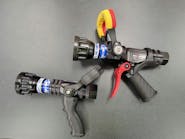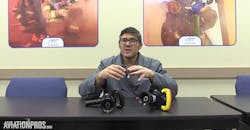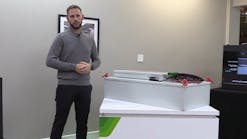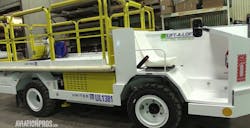Runways no longer up in the error Jeppesen's digital map system can keep taxiing planes out of trouble
As the potential for airport-runway collisions draws concern nationally, Arapahoe County- based Jeppesen Sanderson Inc. hopes its new technology that acts like a GPS for taxiing planes will reduce the problem.
The airport moving map is an option in Jeppesen's electronic flight bag, a digital collection of maps and information that can be displayed in the cockpit.
Preventing runway incursions has been on the National Transportation Safety Board's list of most-wanted safety improvements for years. In fiscal year 2007, there were 371 runway incursions, or unauthorized intrusions onto runways - an average of about one a day.
Last week, the NTSB recommended a direct warning to the cockpit to prevent incursions. It has also recommended implementing a "safety system for ground movement."
The issue of runway incursions came to a head in Denver in January when a Key Lime Air turboprop cargo plane improperly taxiing on an active runway came close to colliding with a Frontier Airlines plane set to land on the runway. The pilot of the Key Lime plane said blowing snow reduced his visibility.
Airport moving maps are "one of probably the most powerful things to help pilots," said Jim Burin, the director of technical programs at the Flight Safety Foundation. "It's a great asset to give them situational awareness on the airfield," particularly in bad weather or when they are unfamiliar with an airport.
Airport moving maps show the pilots' "own ship position," just as a Global Positioning System unit in a car does. According to the Federal Aviation Administration, research showed that pilots had better awareness of their position at an airport using such a display.
In April, the FAA finalized new certification policies, paving the way for the use of airport moving maps in Class II electronic flight bags, or EFBs, which are portable but connected to aircraft systems.
That allows airlines that are not buying new aircraft to retrofit their planes with EFBs that feature the airport moving map.
"We're still relatively new to having the technology," said Jeppesen enterprise solutions strategist Rick Ellerbrock. "Now it's up to industry."
Airport moving map technology, which is focused on preventing runway incursions by pilots, is separate from Denver International Airport's efforts to enhance runway and taxiway signs and markings, and to improve training for drivers of vehicles on the airfield. Other national efforts to prevent runway incursions include developing perimeter taxiways and looking toward satellite-based technology for navigation.
Most EFBs are being installed in new aircraft. These are Class III EFBs. Many U.S. airlines, including United, the largest carrier in Denver, are not making investments in new airplanes but are upgrading their existing aircraft. It costs an airline $20,000 to $50,000 per aircraft for a Class II EFB with the map option, according to Jeppesen. The company's moving map also has an annual subscription fee for database updates."I think it's just a matter of getting the new technology into aircraft," Burin said. "I think in another year or two, you'll see a lot more than have it now."
Jeppesen and United Airlines have been discussing Class II EFBs with the map technology for the carrier's fleet.
The airport moving map isn't the only technology available to prevent runway incursions. Other technology includes audible alerts, which warn pilots of potential runway incursions, such as a system developed by Honeywell and Sensis.
Other companies offer EFBs and airport moving map software, but Jeppesen said it is well-positioned with its map option for Class II EFBs.
Burin said the airport moving map might help prevent disasters such as the one involving a Comair jet in Lexington, Ky., last year. The plane, which was taking off from the wrong runway, crashed, killing 49 people.
Alleging negligence, a Comair co-pilot sued the FAA, the airport and Jeppesen.
The first officer's complaint alleged Jeppesen had a duty to warn Comair pilots when Jeppesen knew or should have known its charts were inaccurate, out of date, defective, unreliable or presented an unreasonable danger.





